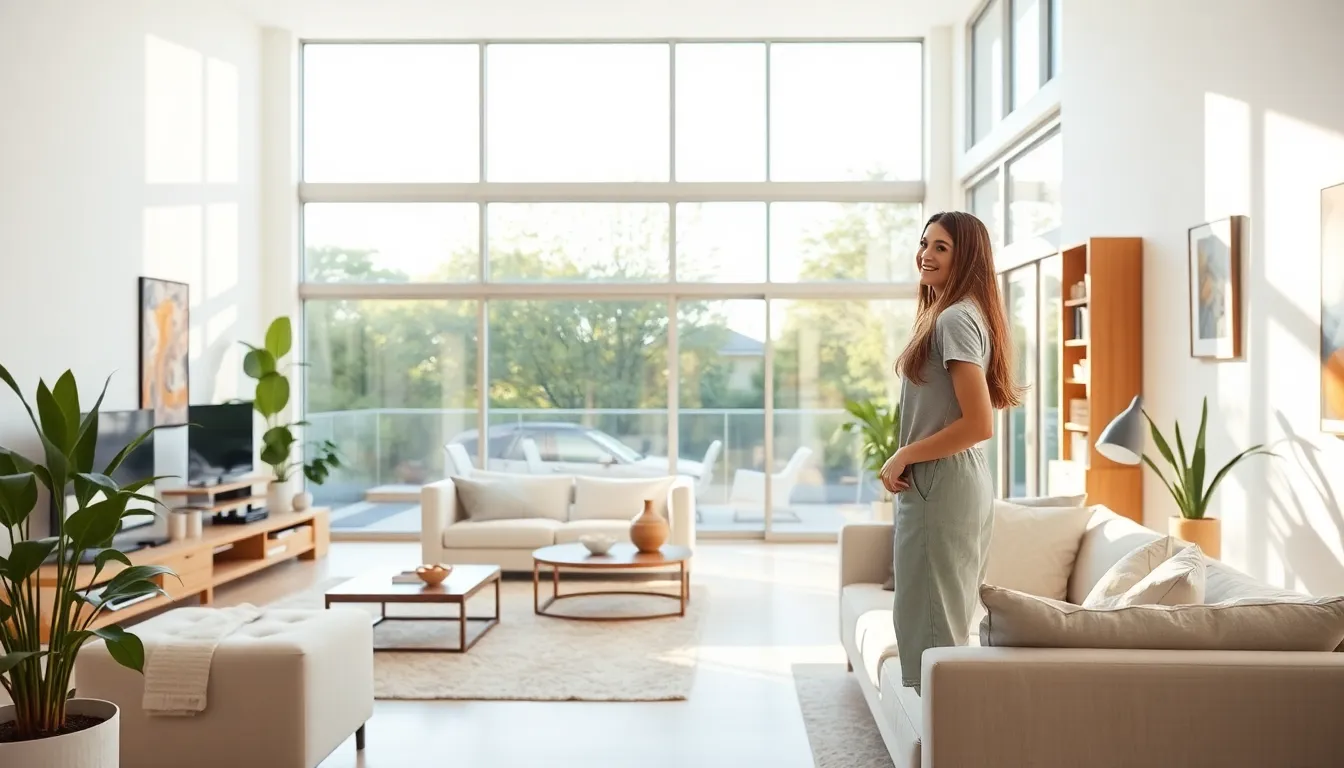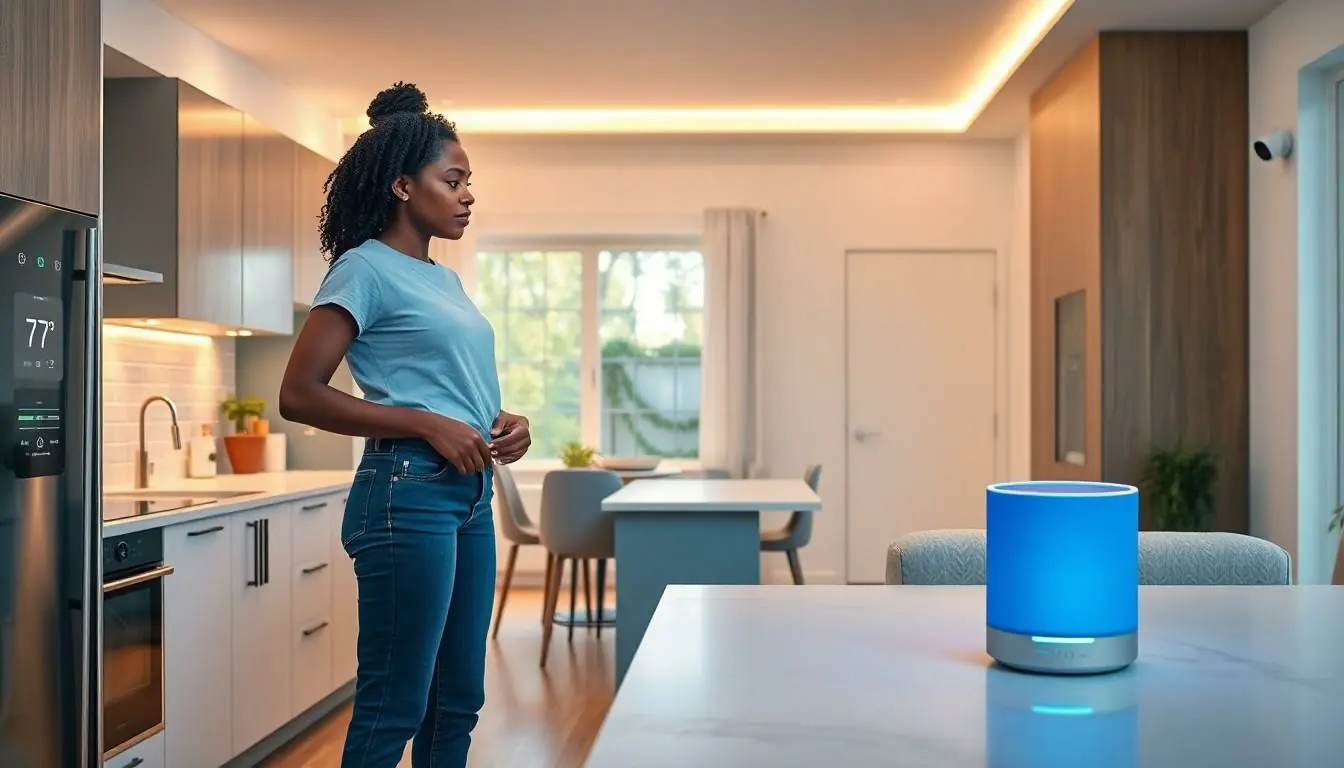Natural light isn’t just a pretty face; it’s the secret ingredient to transforming any space into a vibrant haven. Imagine basking in the warm glow of sunlight while your neighbors squint under the harsh glare of fluorescent bulbs. By harnessing the power of natural light, one can create an inviting atmosphere that boosts mood and productivity.
Table of Contents
ToggleUnderstanding Natural Light Use
Natural light plays a crucial role in creating inviting spaces. Light from the sun significantly influences the ambiance and functionality of interior environments.
Definition and Importance
Natural light refers to sunlight that comes into a space without artificial alterations. It illuminates areas, offering a reliable source of illumination throughout the day. Its importance extends beyond aesthetics; natural light improves overall well-being by regulating circadian rhythms. Exposure to sunlight can lead to better sleep patterns and a higher quality of life. Architects and designers recognize this value when planning residential and commercial buildings, prioritizing windows and skylights to maximize daylight exposure.
Benefits of Natural Light Use
Natural light optimizes energy efficiency by reducing dependence on artificial lighting. In workplaces, it boosts productivity levels; studies show that employees exposed to ample daylight report increased job satisfaction. Enhanced mood is another benefit attributed to natural light; it elevates serotonin levels, supporting mental well-being. Natural light also enhances visual clarity, making tasks easier to perform and reducing eye strain from harsh artificial lights. This combination of benefits creates healthier, more productive environments, highlighting the advantages of incorporating natural light in various settings.
Applications of Natural Light Use

Natural light plays a significant role in both residential and commercial settings. Understanding its applications enhances spaces and promotes well-being.
Residential Spaces
Natural light transforms residential areas into inviting sanctuaries. Large windows and open floor plans maximize sunlight, creating bright and airy rooms. Homeowners benefit from improved mood and energy levels due to increased daylight. Additionally, natural light helps create an illusion of more space. Smart use of skylights and light tubes can also enhance darker areas in the home. Overall, integrating natural light into home design fosters a warm, welcoming atmosphere.
Commercial Environments
Natural light boosts productivity in commercial environments. Office spaces with plenty of windows see higher levels of employee satisfaction. It enhances focus and reduces eye strain, which helps people work more efficiently. Implementing glass partitions allows for daylight to penetrate deeper into the workspace. Furthermore, retail environments benefit from natural light’s ability to attract customers and enhance product visibility. Overall, natural light significantly influences workplace atmosphere and effectiveness.
Strategies for Maximizing Natural Light Use
Maximizing natural light in various environments requires thoughtful strategies. Key areas to focus on include architectural design and window placement.
Architectural Design
Architectural design plays a crucial role in enhancing natural light. Open floor plans encourage light flow and create spacious environments. Incorporating large, strategically placed windows allows sunlight to stream into darker corners. Rooflines can be designed to optimize the sun’s angle throughout the day, ensuring spaces receive ample light. Utilizing light-colored materials and reflective surfaces enhances the distribution of natural light, reducing the reliance on artificial sources. Integrating skylights serves as an effective way to tap into daylight, especially in areas where traditional windows may not suffice.
Window Placement and Size
Window placement and size significantly impact how light enters a space. North-facing windows allow for consistent, diffused light, avoiding harsh glare. Larger windows provide greater light intake, fostering bright and welcoming interiors. Varying window heights encourages different light penetration and creates dynamic spaces. Additionally, strategically placing windows opposite each other promotes cross-ventilation and enhances daylight distribution. Implementing floor-to-ceiling windows can blur the lines between indoor and outdoor environments, amplifying natural light’s benefits while improving overall ambiance.
Challenges in Natural Light Use
Natural light use presents several challenges that architects and designers must address to maximize its benefits in any space.
Geographic and Seasonal Limitations
Geographic location influences natural light availability. Areas closer to the equator receive more consistent sunlight throughout the year, while regions in higher latitudes may experience reduced daylight during winter months. Seasonal changes also affect light intensity and duration, creating variability in natural light exposure. Overcast weather conditions can significantly diminish the quality of sunlight entering a space. Interior layouts, especially in dense urban environments, can further obstruct light penetration, making optimal sunlight access difficult in specific settings.
Overcoming Common Obstructions
Obstructions can hinder natural light flow into spaces. Trees, buildings, and other structures may block sunlight, affecting interior brightness. Positioning windows strategically aids in mitigating this issue. Incorporating reflective surfaces can amplify light distribution, ensuring it reaches deeper into the room. Adjusting landscaping to include trimmed foliage or strategically placed plants enhances light access. Choosing transparent materials in partitions also allows more sunlight to filter through, promoting a lighter atmosphere. Adopting these solutions fosters environments that capitalize on available natural light while addressing obstructions effectively.
Embracing natural light is essential for creating spaces that inspire and uplift. Its ability to enhance mood and productivity makes it a vital component in both residential and commercial design. By prioritizing natural light through thoughtful architectural choices and strategic window placements, designers can craft environments that not only look appealing but also promote well-being.
Overcoming challenges related to light availability can lead to innovative solutions that maximize daylight exposure. Ultimately, the integration of natural light transforms interiors into vibrant havens, fostering a healthier and more productive lifestyle.







